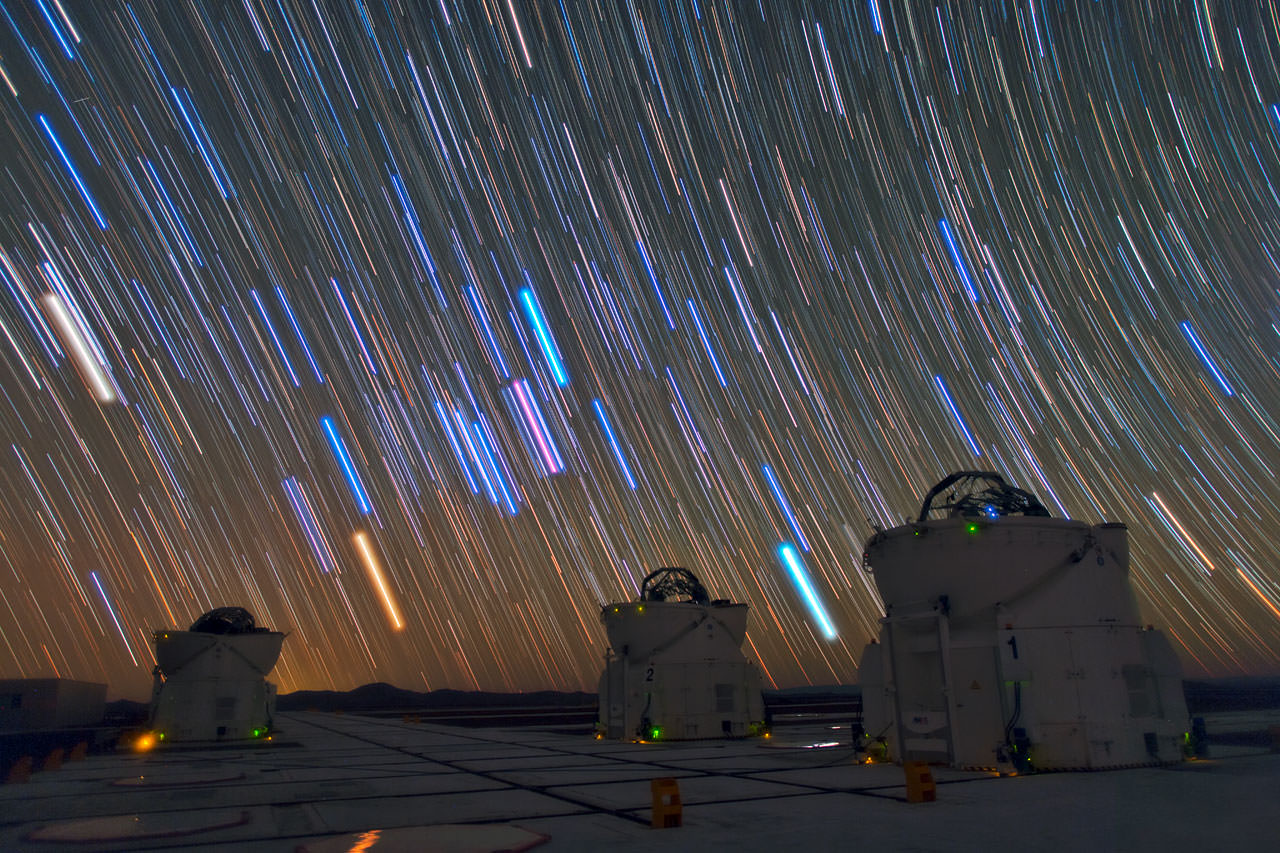There are so many colorful streaks in that image above that you’d be forgiven for thinking somebody is shooting lasers around the European Southern Observatory (ESO) in Chile. Actually, though, this demonstrates a common technique for astronomy photo-taking where you do a time lapse to watch the stars moving as the Earth makes its daily rotation.
The image of auxiliary telescopes of Very Large Telescope Interferometer is not only pretty, but does have some scientific interest as well, ESO said.
“This technique … enhances the natural colours of the stars, which gives an indication of their temperature, ranging from about 1000 degrees Celsius [1,832 Fahrenheit] for the reddest stars to a few tens of thousands of degrees Celsius [or Fahrenheit] for the hottest, which appear blue. The sky in this remote and high location in Chile is extremely clear and there is no light pollution, offering us this amazing light show,” stated the European Southern Observatory.
According to ESO, these supplementary telescopes working together allow astronomers to “see details up to 25 times finer than with the individual telescopes.” You can read more about the VLTI at this ESO link, which includes some interesting facts — such as why the interferometers are named Antu, Kueyen, Melipal and Yepun.
Source: European Southern Observatory


Wow, that is a very cool picture. Love the colours!
Counting the three scopes from left to right as 1, 2 and 3, then red star could be Betelgeuse, with the brightest blue star between 2 and 3 looking like Rigel.
If so, that would explain the explosion of color to the 11 o’clock of scope 2 as Orion’s belt.
Any one else get that?
The brightest blue star between 2 and 3 is Sirius. Orion is entirely between 1 and 2. The brightest star nearest to the left edge is Aldebaran in Taurus.
Cheers. Thanks Meffie